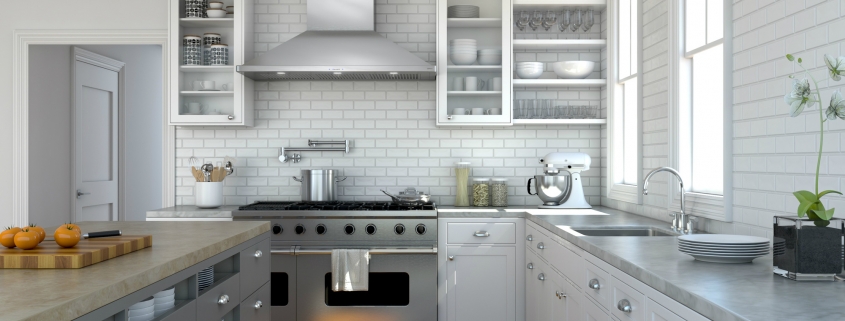Downdraft Vs. Vent Hood – Which One is For You?
While it’s true that cooking can fill your entire home with fantastic, tempting smells and flavorful visions of glorious meals, using that cooktop without proper ventilation can also stress surfaces, create heat, fumes, smoke, and bad odors, and can damage surfaces in the kitchen. The answer is effective kitchen ventilation to increase comfort, keep things clean, and keep indoor air quality at a healthy level.
Many people are already familiar with traditional vent hoods – but there is a newer type of ventilation available now that uses down drafts instead of updrafts to help remove particles from the cooking area. Which one is right for you?
Vent Hood Ventilation: The Pros and Cons
The most common option for kitchen ventilation is the hood fan, which uses updraft ventilation. The hood fan is mounted directly above the cooktop or stovetop area and is designed to pull grease, steam, smoke, and vapors from the stove top up through a filtration system, then either through a duct system to the outdoors or back into the kitchen.
The pros of using updraft hood vans are that they are more effective than downdraft ventilation, and there are many innovative designs available today that offer many great low-profile options. Some of them are even designed to turn on automatically when cooking begins and temperature increases.
There are a couple of cons to opting for this type of ventilation: The first is that they are more difficult to install than downdraft systems, and the second is that they are visible at all times.
The Benefits and Drawbacks of Downdraft Kitchen Ventilation
Downdraft systems are integrated right into the cooktops and are positioned behind burner areas. The vents stay hidden and can usually rise to a height of at least 10 inches when in use. When cooking is finished, the system can be lowered back down into its base. Oftentimes, this type of ventilation is used with islands and other areas where a hood fan just isn’t very practical or possible.
The good points of this type of ventilation system are that they offer a clean design and can be tucked away to not disrupt the flow of the smooth look of a modern kitchen. There is no ductwork needed either, and they are really pretty easy to install.
Drawbacks to using a downdraft kitchen ventilation system include a lower efficiency at drawing steam from taller pots and pans that may be used, and they are overall less effective than a hood fan. In addition, some of them may interfere with gas cooktop flames.
Each type of ventilation system for kitchens has its share of pros and cons, so you’ll want to consider a few things carefully before you choose which one you’ll be going with. What type of range or cooktop do you have? What is the size of your range? Consider the distance that air will need to be moved and if you decide on a hood fan, be sure that it is as wide as your range and as deep as the design of your kitchen space will allow. No matter which type of ventilation you choose, count on appliance repair in San Francisco for all your appliance maintenance and repair needs!
No matter which type you end up choosing, we can help you with repair and maintenance services you need for kitchen ventilation. Contact our experts today for all your kitchen appliance repair and maintenance needs!




